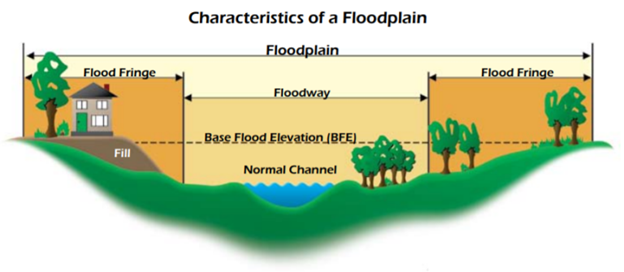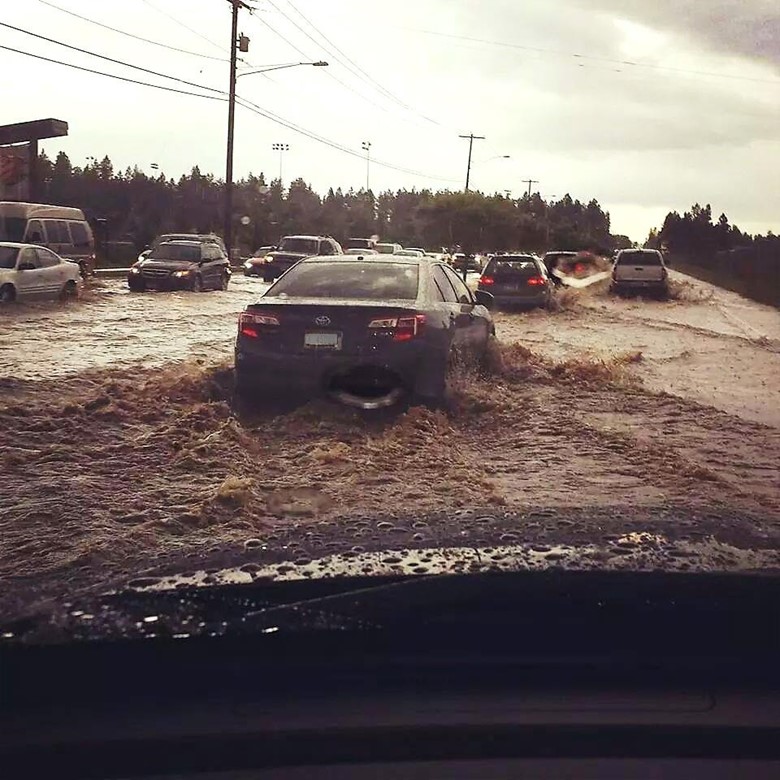April Showers Bring May Floods
How can we protect water quality during flood events?
This story was written by the Our Gem Collaborative team for the CDA Press on Sunday, Apr. 18, 2021. Read the original article.
Spring flooding is especially common in Kootenai, Shoshone, and Benewah Counties. According to the Idaho Office of Emergency Management, Kootenai County experienced an average of 22 “major flooding events” between 2012 and 2017, the second highest in the state.
Most flooding occurs along natural stream or river channels of course. The land along a stream or river that is identified as being susceptible to flooding is called the floodway. Communities in our region are especially vulnerable to flooding of our many rivers, lakes, and creeks due to snowmelt, rain, or rain on snow events combined with steep mountain slopes. The extent of flooding depends on many factors including depth of winter snowpack, spring weather patterns, watershed and stream gradients, watershed vegetation in uplands and lowlands, and the natural and artificial floodwater storage areas.
While it is well known that flooding can cause dangerous driving conditions and structural damage for property owners, floodwaters may also contain harmful bacteria, hazardous materials, and other toxins that can have disastrous impacts on public health and the environment throughout the entire watershed.

Hazardous Materials
A common problem during, and after a flood, is the displacement and leakage of tanks and other containers of hazardous materials (i.e., radioactive, flammable, explosive, corrosive, toxic, or allergenic). To minimize water quality contamination from these types of container leaks, follow these precautions: Store hazardous materials in areas not susceptible to rising and receding flood waters, such as fenced areas, cabinets, or storerooms. Clearly identify and label contents, especially when materials are not in original containers. Make sure containment vaults for underground storage tanks have been engineered properly to prevent tanks from floating out of the ground if contents are lighter than water.
Wastewater and Septic Systems
The spread of harmful bacteria and other contaminants can also occur during a flood when wastewater and septic systems become overloaded and toxins enter groundwater and drinking water wells. To minimize and prepare for water quality contamination from wastewater and septic systems, identify at what water level your system can become compromised and prepare an emergency response plan. Do not pump your tank when the drain field is flooded or oversaturated. Do not use the sewage system until water in the soil absorption field is lower than the water level around the house. Have your septic tank professionally inspected and serviced (every 3-5 years) and when you suspect damage. If the soil absorption field is clogged, a new system may have to be installed or the wastewater diverted to a replacement drain field.

Drinking Water
Floodwaters may contaminate drinking water wells and systems. If your private well is flooded, assume the water in your home is contaminated. Do not use contaminated water for any household use. Before a flood, precautionary measures to protect and prevent floodwater entry into the water system include sealing pipes, distribution lines, or other openings connected with your drinking water system. Have your well tested for bacteria and other contaminants before returning it to service.
Through planning and education, community members, homeowners and businesses can help minimize the negative impacts flooding can have on human health and the environment and we can all help to reduce flood-related threats to water quality! Learn more about flood preparedness .








